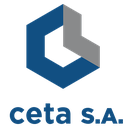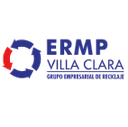Executive Secretary

IV International Conference on Sustainable Energy Development
CIDES 2025
The feasibility and electrochemical behavior of aluminum under metallurgical conditions: 99% Al, Al5154, and Al6063 were studied to generate hydrogen. Al5154 and Al6063 were obtained from recycled aluminum can rings and structural aluminum windows respectively, using 99% Al as a reference. All these materials were melted by conventional casting in an electric furnace and their microstructure was characterized by Scanning Electron Microscopy (SEM), X-ray Diffraction (XRD) and electrochemical characterization consisted of Open Circuit Potential (OCP), Potentiodynamic Polarization Curves (PPC) and Linear Polarization Resistance (LPR) tests in seawater solution at pHs 8, 12 and 14. All these microstructural and electrochemical characterizations were performed before and after the experiments. The microstructure of 99% Al revealed polygonal grains and impurities, and the Al5154 and Al6063 alloys had a solid-solution Al matrix with Al3Mg and Mg2Si precipitates at the grain boundaries. The PCAs shifted into active regions with increasing pH, as did the corrosion potential (Ecorr) and corrosion current density (Icorr), consistent with the RPL results. The aluminum and its alloys analyzed in this investigation displayed active-passive behavior; Tafel slopes b and c were characteristic of hydrogen evolution. The formation of new phases and the presence of corrosion products were evident. Analysis of these results suggests that these second-grade alloys are good candidates for generating hydrogen through electrochemical reactions.
La factibilidad y el comportamiento electroquímico del aluminio en condiciones metalúrgicas: 99%Al, Al5154 y Al6063 se estudiaron para generar hidrogeno. El Al5154 y Al6063 se obtuvieron de arillos de latas de aluminio reciclado y ventanas estructural de aluminio respectivamente, empleado como referencia el 99%Al. Todos estos materiales se fundieron por colada convencional en un horno eléctrico y su microestructura fueron caracterizados por Microscopia Electrónica de barrido (MEB) , Difracción de Rayos-X (DRX) y la caracterización electroquímica consistieron en ensayos de Potencial a Circuito Abierto (PCA), Curvas de Polarización Potenciodinamicas (CPP) y Resistencia a la Polarización Lineal (RPL) en solución de agua de mar a pHs 8, 12 y 14. Todas estas caracterizaciones microestructurales y electroquímicas fueron realizadas antes y después de la experimentación. La microestructura del 99%Al revelaron granos poligonales e impurezas y las aleaciones Al5154 y Al6063 tuvieron una matriz de solución sólida de Al con precipitados de Al3Mg y Mg2Si en los límites de grano. Los PCA se desplazaron en regiones activas al aumentar el pH, al igual que el Potencial de corrosión (Ecorr) y la densidad de corriente de corrosión (Icorr), siendo congruente estos con los resultados de RPL. El aluminio y sus aleaciones analizadas en esta investigación mostraron un comportamiento activo-pasivo, las pendientes de Tafel b y c, fueron características para la evolución de hidrógeno. Se evidenciaron la formación de nuevas fases y presencia de productos de corrosión. Los análisis de estos resultados sugieren que estas aleaciones de segundo son buenos candidatos para generar hidrógeno por medio de reacciones electroquímicas.
About The Speaker

Ph. D. Jose Enrique Flores Chan

Discussion






